A compost toilet is a waterless toilet perfect for use in off-grid locations. Not only do compost toilets save water, they also create usable compost as a byproduct. With a typical domestic toilet getting through 45,000 litres of treated water per year, the compost toilet offers a water- and energy-saving alternative.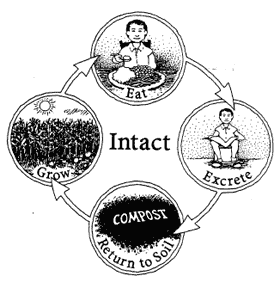 Compost Toilets
Compost Toilets
A compost toilet is typically made up of two chambers. One chamber which is in use, and one chamber which is left full for one year so that its contents can decompose fully. Once a year the full chamber is emptied, and the ‘toilet’ moved over it. The chamber which had just been in use has some extra plant matter (e.g. weeds and vegetable pealings etc) added to it and it is then left for its year of decomposition.
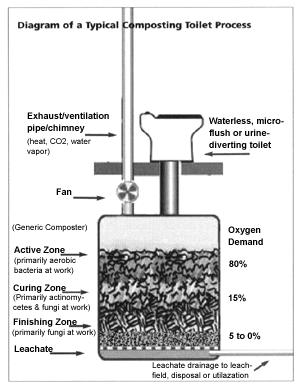
A vent pipe is essential to prevent the toilet from getting smelly. As with a standard toilet, the top of the vent pipe should be at least 600mm above the roof apex. For a luxurious smell-free user experience, a fan (solar powered or otherwise) can be fitted into the vent pipe and automatically activated when the toilet seat is lifted. A drain at the bottom of the chamber enables excess liquid to run off to keep the chamber dry.
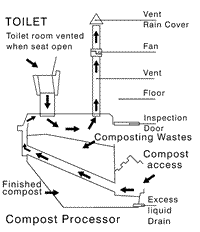
Each time the toilet is used, soak (typically straw, sawdust, shredded paper, hay etc) is dropped in. This gives the bacteria living in the toilet chamber a suitable diet of carbon and nitrogen. Without the soak, the bacteria wouldanaerobically (without oxygen) digest a nitrogen-rich diet resulting in large amounts of smelly ammonia and hydrogen sulphide, together with nasty greenhouse gas methane. With the correct amount* of soak, the material in the chamber is decomposed aerobically (with oxygen) resulting in nitrates, phosphates, and sulphates – i.e. fertiliser – being generated and minimal greenhouse gases being released. * The ratio of soak to feces should be around 5:1 resulting in an optimal 40:1 to 70:1 carbon/nitrogen ratio.
Urine and Compost Toilets
The key to success with compost toilets is keeping urine separate. Too much urine in the waste chamber causes smelly anaerobic decomposition. Urine is naturally high in nitrates, phosphates, and sulphates, and so can be used (dilluted 1:10 in water) as a fertiliser for non-edible plants and trees.
Using Human Compost to Grow Crops
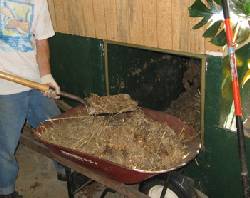
The fertiliser generated from decomposed human waste (aka humanure) can safely be used in the growing of crops. Within a few hours the vast majority of human pathogens die since they cannot survive outside the human body. After one year of decomposition the only nasty which can remain is a type of roundworm (Ascaris Lumbricoides) egg – these can survive for up to 10 years. Parasitic roundworm infection affects over 1 billion people worldwide.
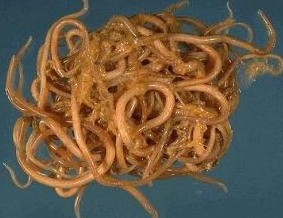
Because of this minimal risk*, it is usually recommended that this human compost is not used to fertilise vegetable crops, and instead is used for fruit trees and bushes, and non-edible plants.
* As long as you know that you and everyone else who uses your compost toilet does not have roundworm, this is not really an issue.
Benefits of Compost Toilets
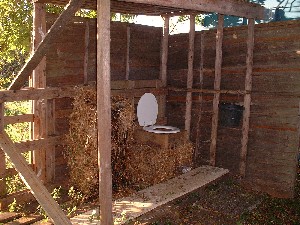
There are many benefits to compost toilets compared to standard plumbed in toilets. No water is required, no pipes are needed, no sewage treatment is required, no chemical cleaners or bleach are used, no electricity is needed, and the end product can be used to fertilise the land returning organic matter to the soil where its nutrients are needed.
Humanure and Compost Toilet Reading
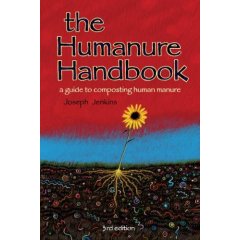
The Bible of humanure is Humanure Handbook: A Guide to Composting Human Manure by Joseph Jenkins – available in paperback for around £12.00.
Useful Related Toilet Links
For more information on saving water when flushing a standard toilet click here. To find out how to use collected rainwater to flush a toilet click here.